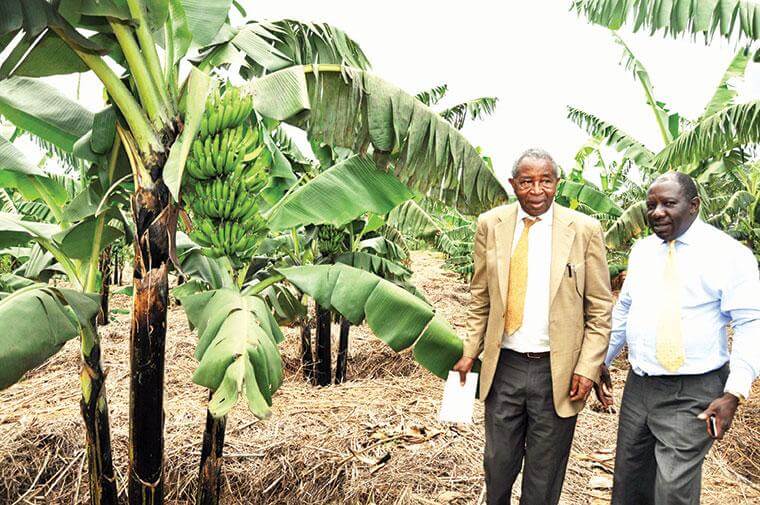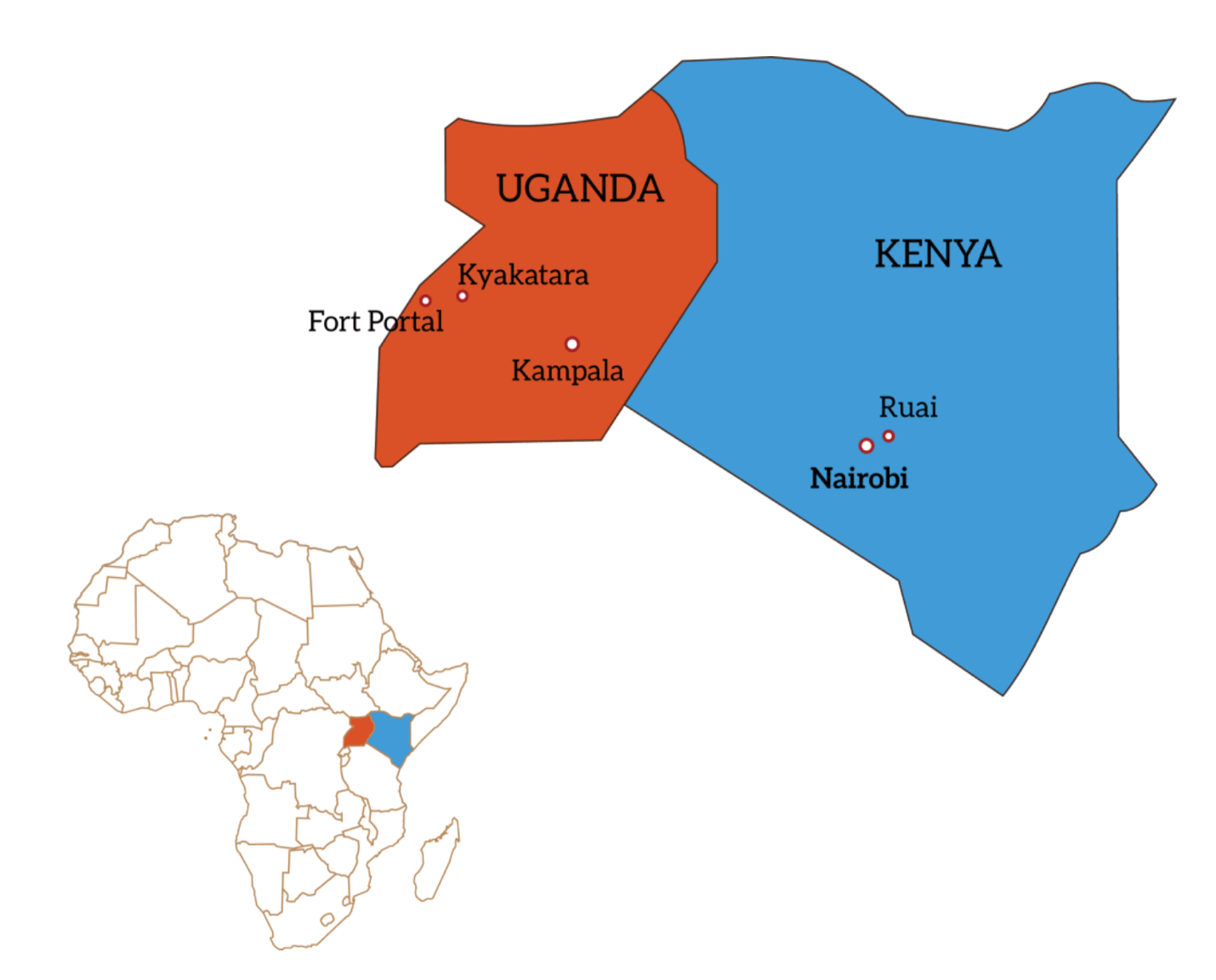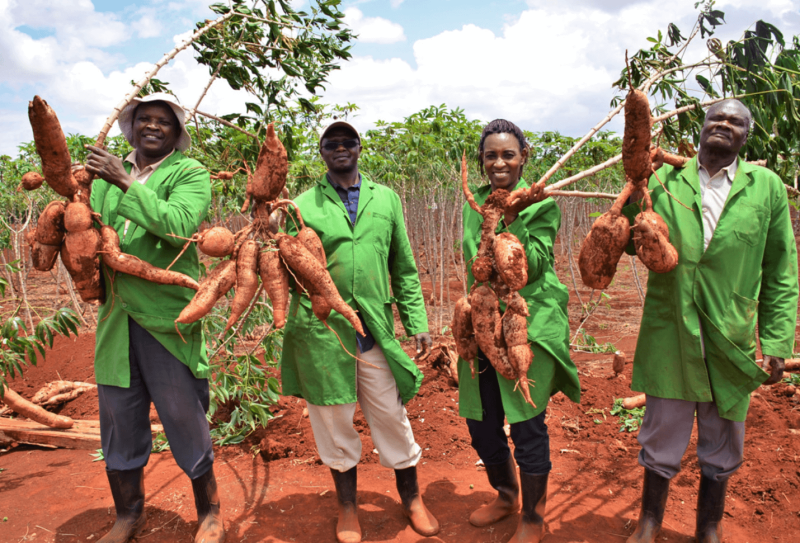The decision last fall by newly-elected Kenyan President, Dr. William Samoei arap Ruto to lift his country’s 10-year ban on GM-food imports and cultivation —currently being evaluated by the High Court — has sparked a grassroots push in neighboring Uganda to follow Kenya’s president’s embrace of modern ag technology.
Scientists and farmers in Uganda, which neighbors Kenya to the west, have welcomed Ruto’s move, hopeful they will gain access to GM-seeds through the porous border. Uganda has lagged behind Kenya over the years in agricultural innovation. Farmers eager for the latest innovations have been accessing hybrid maize and other improved agri-technologies from Kenya since the late 1960s.
Kenya, an economic powerhouse on the continent with a large commercial agricultural sector, is Uganda’s biggest trading partner. Kenyans who live in the western region where Bt (GM)-cotton is being openly cultivated, are ethnically closely-related to eastern Ugandans. They informally exchange goods and services daily, including seeds and other planting materials.

Erostus Nsubuga, the immediate past chair of the Kampala-based Uganda Biotechnology and Biosafety Consortium (UBBC), said Kenya is a great model for Uganda as genetic engineering in agriculture in that country is treated as a ‘need-based technological intervention’.
That country is annually short of their biggest staple food [maize], just because they cannot produce enough equal to their needs. Key constraints are drought (a large swathe of Kenya is semi-arid) and pests especially stem/stalk borers and Fall army worms that ravage this highly-valued cereal crop. So, they depend on food mainly maize imports from Uganda (largest amounts), and from elsewhere. But the wisdom of permitting cultivation of GM-maize resistant to stem/stalk borers and fall army worms, and Bt-cotton plus developing drought-tolerant GM-maize varieties, will be a very big game-changer in the region.
If GM crops get the greenlight, Kenya, he explained, will get a big boost in maize and cotton production and productivity per unit area. This will translate into enough amounts for local use but should also flood the East African market with maize, including in Uganda, South Sudan, Somalia and DR Congo. By coincidence, Uganda has Bt-maize and Bt-cotton among its portfolio of genetically-engineered crops that are ready for release to farmers.

Nsubuga, an agricultural scientist and CEO of one of East Africa’s largest enterprises in Tissue Cultured (TC) crops, the Agro-Genetic Technologies (AGT) Ltd., has been emboldened by Ruto’s cabinet move to lift the GMO import ban, which was imposed in 2012.
It is as safe as it was before 2012, during 2012 and to-date 10 years after. Kenya is our neighbor, one of the largest economies in Africa….., so we’re bound to benefit from the ban’s lifting, because Kenyan GM seed will come through to Uganda, as our government dilly-dallies about permitting our own GM-bred crops’ commercialization. We should no longer labor with the Uganda Government over the Biosafety Bill, as GM-technology is going to come in, like hybrid seeds did in the last century…. The law will come in later, retrospectively.
Nsubuga observed that Uganda’s science policy-making is heavily conflicted with partisan politics, cultural and religious sentiments, which has led to a checkered biosafety law-making process.
Uganda reaction
Mzee Dominic Etellu, a large-scale cassava, millet, sorghum and cotton farmer in Teso sub-region in Eastern Uganda, and chair of the loose National Farmers’ Forum on Agricultural Biotechnology in Uganda (NAFABU), is equally optimistic:
A large percentage of Kenyans and Ugandans are the same people, I don’t rule out GM-seeds coming in from Kenya through ordinary people’s seed exchanges. President Ruto’s action is already a landmark decision by his young Government to allow Kenya advance further in agricultural technology; this is what the enemies of sub-Saharan Africa sponsor anti-GM activists to fight.

An elderly farmer and a respected Catholic leader of the laity, Etellu also expressed confidence and enthusiasm that GM-seeds shall find their way into Uganda from Kenya via the two countries’ close economic ties.
Either formally or informally, Kenyan GM-seeds shall come over… Our farmers badly need maize resistant to stem/stalk borers and to the Fall Army Worms (FAWs)… Our scientists have developed [insect resistant] Bt-maize resistant to stem/stalk borers/FAWs, and drought-tolerant GM-maize, but the government has over-played politics and emotions with a relevant regulation to permit commercial release of these GM-maize varieties, that farmers have got frustrated. Who will pay for the losses we suffer, when solutions are lying idle in the labs and Confined Field Trials (CFTs) of the State-run National Agricultural Research Organization (NARO)?
Etellu, a retired ag-researcher in the Ministry of Agriculture, Animal Industry and Fisheries (MAAIF), decried high-quality and expensive GM-research work going to waste in NARO, on bananas, cassava, cotton, potato, rice and soya.
We’ve been so expectant; the GM technology adds value to the conventionally-bred crops. These are symbiotic and integratable technologies. Genetic Engineering (GE) in Uganda isn’t done in isolation; as activists mislead the world to believe. GE is done on conventional, indigenous, farmer-saved seeds or traditional crops, to protect them.
Peter Wamboga-Mugirya, Director, Communication and Partnerships, Science Foundation for Livelihoods and Development (Scifode), and Executive Member of the Uganda Science Journalists’ Association (USJA). Find Peter on Twitter @wambotwit































